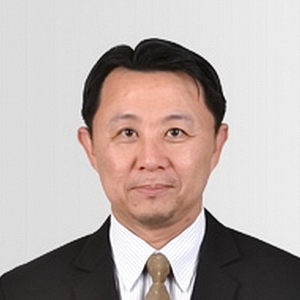
The COVID-19 pandemic has been ongoing for about two years now and has impacted the world economy and private organizations. An unexpected consequence of the COVID-19 pandemic has been an increase in white-collar crime.
Private organizations, e.g., partnerships, limited companies, public companies, joint ventures, consortiums, have faced a significant decline in income resulting in reorganizations and more thorough internal audits to eliminate unnecessary costs and expenses. During such reorganizations or internal audits, these private organizations are uncovering white-collar criminal activities within their organizations.
The term white-collar crime generally covers a broad range of nonviolent crimes committed by professionals or personnel in governmental or private organizations with the aim or motivation being personal financial gain or other benefits. White-collar crime in the form of employee fraud commonly occurs at least once in almost all private organizations, at various degrees of severity. In this briefing, we will provide an overview of white-collar crime in Thailand.
Deep-Rooted Crime
One of the problematic characteristics of white-collar crime is that it is a nonviolent crime that is usually committed by exploiting the knowledge of a profession, e.g., accounting, finance, etc., and is performed using the power entrusted to individuals by an organization. These factors allow white-collar crimes to be committed stealthily, and repeatedly. In some cases, the criminal activities can be so deep-rooted within an organization that such crimes have been ongoing for years, if not decades. Damage to an organization from such long-term criminal activities can exceed hundreds of millions of Baht. Ongoing white-collar crimes within an organization can be difficult to detect, since evidence may have been destroyed, hidden or the organization itself may not have an effective record keeping system. Assessing the damage done is also difficult in cases of long-term white-collar criminal activities within a company.
It is interesting to note that the maximum prescription period for prosecution of criminal offences under the Penal Code is 20 years, while the prescription period for the prosecution of most white-collar criminal offences is only 10 – 15 years. This means that in a case where a white-collar criminal offense has been ongoing for over 20 years, a prosecution is only possible in respect to those activities committed in the past 10-15 years.
Common White-Collar Crimes
While most white-collar crimes involve employee fraud committed by an employee who is directly entrusted with the finances of the organization, i.e., accounting and finance departments, white-collar crimes can be committed at all levels and involve all departments within an organization. The following are examples of white-collar crimes that are commonly discovered within private organizations:
- Theft – Theft of an organization’s assets can be committed by any employee of the organization as theft is simple and does not require a specific position or power within an organization. The stolen assets can range from low-value office supplies or petty cash, to high-value equipment, goods, or products. Inefficient inventory systems, and small amounts of stolen assets can make theft difficult to detect.
- Espionage – Espionage tends to refer to the theft of data or information. The target data or information can be vital or the core value of a business, e.g., formulas, trade secrets, know-how, or intellectual properties of the organization. While espionage may be more common elsewhere, it’s quite rare in Thailand.
- Fraud – Fraud is a crime where an employee deceives an organization, and this results in the organization making payments or providing property to such employee or their accomplices. Fraud usually involves the forgery of documents that will be used for deception. For example, an employee falsifies a supplier’s invoice to deceive the organization to make a payment for a non-existing debt, then the employee processes the payment to himself.
- Cheque Forgery – Use of the organization’s cheque containing a forged signature of the organization’s authorized signatory to steal money from the organization’s bank account occasionally occurs within an organization that has consolidated their payment process under one staff without proper monitoring measures.
- Embezzlement – Embezzlement is a crime where employees are entrusted with the organization’s assets, and deliberately take such assets for themselves. This is commonly found in finance and accounting departments, which by the nature of their duty, must keep assets like petty cash on behalf of the organization.
- Conflict of Interest / Insider information / Collusion / Bribery – These types of crime are usually committed by an employee in charge of procurement. There are many forms of such crimes. One may choose his own company as the supplier of the organization. One may accept a bribe in exchange for insider information in a bidding process. One may ask the supplier to inflate the quoted price of the goods being procured and demand a share of the profit from such inflated price difference.
Damage Beyond Monetary Harm
Even though white-collar crime is a non-violent crime, it is obviously not a victimless crime. In most cases, business organizations are the direct victims. Shareholders and employees of the organization are the next to be impacted from white-collar crimes. Without such criminal acts, the shareholders may earn more dividends, and the employees may receive higher salaries and bonuses, and the organization may survive without a reorganization.
On many occasions an organization that is the target of a crime may suffer far more damage than just in monetary terms. There may also be consequential damage, e.g., loss of reputation, loss of expected benefits, loss of income due to the business fluctuation, liabilities to third parties. Furthermore, the target of the crime could be other assets of the organization, e.g., information, data, formulas, trade secrets, know-how, copyrights, patents, other intellectual property, office supplies and utilities.
In addition, white-collar crimes usually include a process to cover up or delete traces of the crime, e.g., forgery of financial records and statements. Not only does forgery tamper with documents and data in the organization’s accounting and records system, it may also cause the organization to face issues of false or incorrect tax declarations if such forged financial records and statements are used for tax purposes. If such forged financial records and statements are submitted to any government agency, the organization may be deemed to have made false statements. If the white-collar crimes involve bribery to government officials, the organization may face the issue of bribery and regulatory liabilities.
Conclusion
Given the recent growth of discovery of white-collar crimes in Thailand, organizations should consider reviewing their operations to ensure that proper safeguards are in place to limit the chances that criminal activities are being committed or may be committed by any member of their workforce. In Part II of our review of white-collar crime, we will discuss how organizations can handle cases during the pre-litigation phase where criminal activities have been discovered or suspected.
To discuss the topics in this briefing in further detail, please contact the individuals listed in the left-hand column.
This publication is intended to highlight an overview of key issues for ease of understanding, and not for the provision of legal advice.
For more information and queries on the bidding submission, please contact the key contact person(s).

Waree Shinsirikul +66-2-009-5184 |

Peerapat Pongrojphao +66-2-009-5184 |

Jirayu Sanguankaew +66-2-009-5186 |

Prachaya Boonchouychoo +66-2-009-5192 |
![]()
Chandler MHM Limited
17th and 36th Floors, Sathorn Square Office Tower, 98 North Sathorn Road
Silom, Bangrak, Bangkok 10500 Thailand

















